JVC LT-47X899 LCD TV Measurements
All measurements were made with the backlight (Energy Saver Mode) set so the peak-white level was comfortable for a darkened room. The backlight can be increased a lot to compensate for ambient room light.
Contrast & Resolution
Peak white level
- Full screen: 32.0fL
- 100 IRE window: 21.6fL
Peak contrast ratio: 800:1
Overscan
- 480i/p: 2.5% (Full)
- 720p: 2.5% (Full)
- 1080i/p: 0% (Full Native), 2.5% (Full)
- HDMI/DVI: 37.1MHz
- Component: 37.1MHz
Like the Sony KDL-52W4100 and 52XBR4, the JVC LT-47X899 exhibited a variable black level, even though all dynamic and auto functions were turned off. When switching from a high average picture level (APL) to a full-screen black field, the black level dropped from 0.027fL to 0.018fL after about 10 seconds or so. The measured black level listed here is the higher value before the drop, because normal program material will rarely if ever be dark enough for long enough to let it drop.
I was surprised at how much difference there was between the peak-white values for full-screen white field and 100 IRE window. Normally, these two measurements are much closer on LCD flat panels.
Looking at a multiburst pattern to see the horizontal bandwidth, there was a lot of noise in the high-frequency burst via component, but not HDMI.
Grayscale & Color Temperature
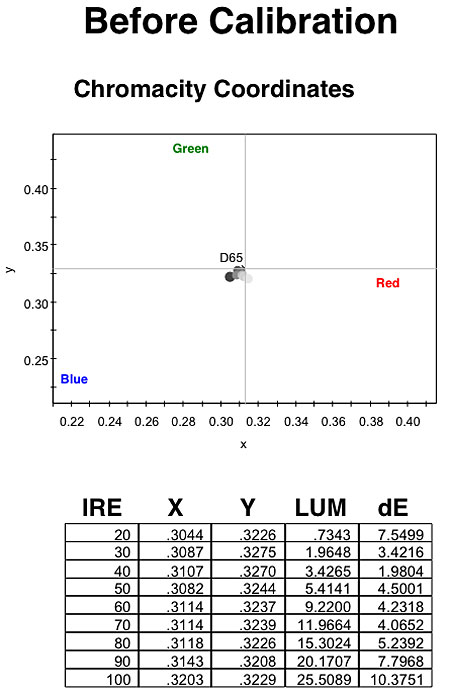
Out of the box, the Low color-temp setting was pretty close to correct, tending slightly toward blue.
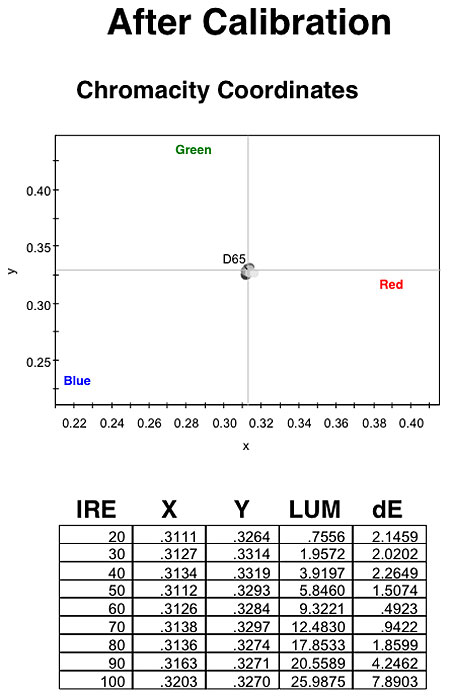
Calibration got it closer, but the improvement was small.
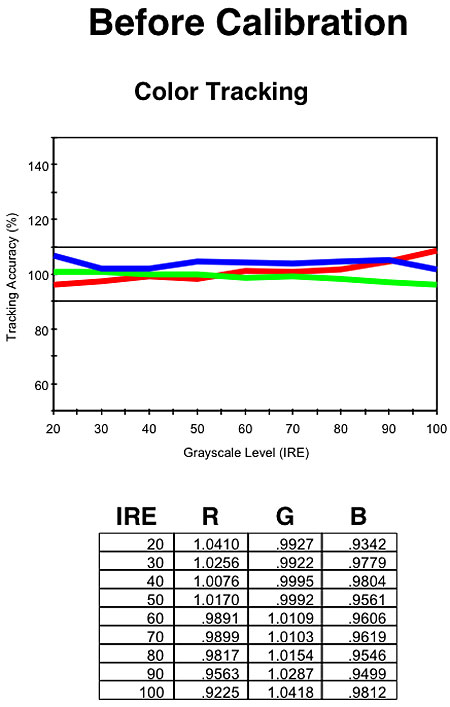
As expected from the grayscale coordinates, the color balance was predominantly blue, but not by a lot.
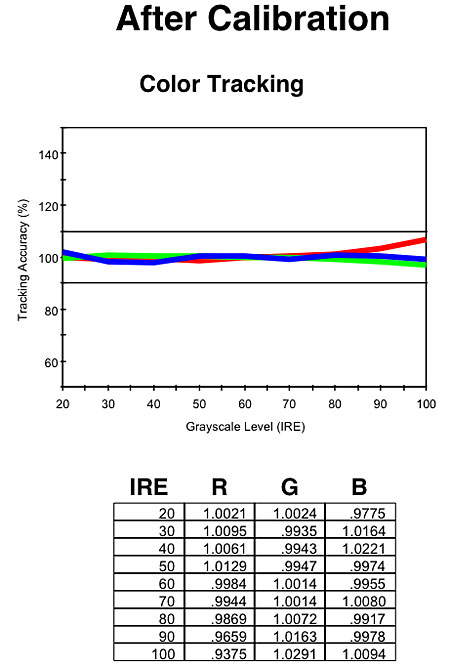
Post-cal, the color balance was better.
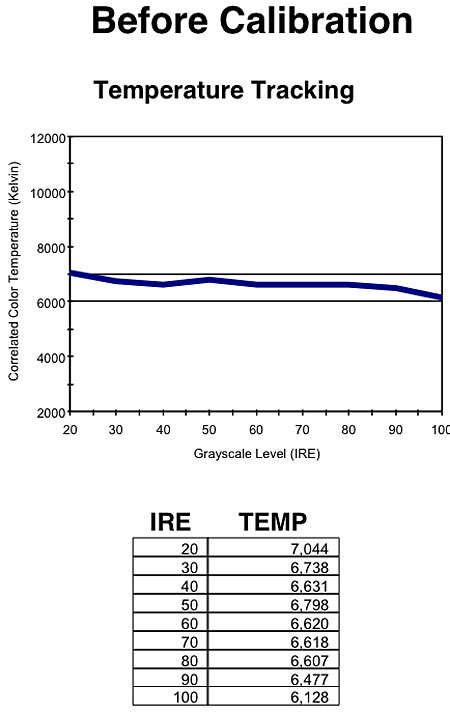
Pre-cal color temp tended a bit high.
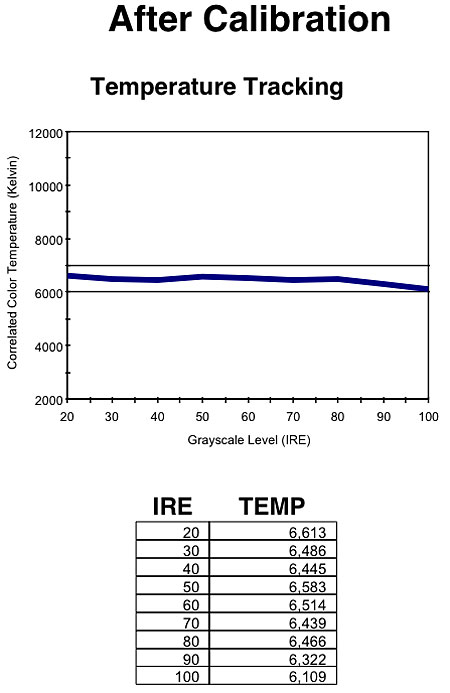
Calibration brought the color temp closer to the mark, though it follows a similar profile as the pre-cal curve, dipping too low at the high end.
Color Accuracy
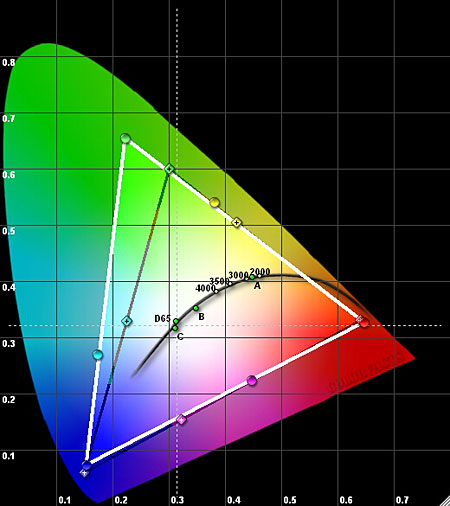
Before tweaking the color-management system, red and blue weren't bad, but green and all secondary colors were way off.
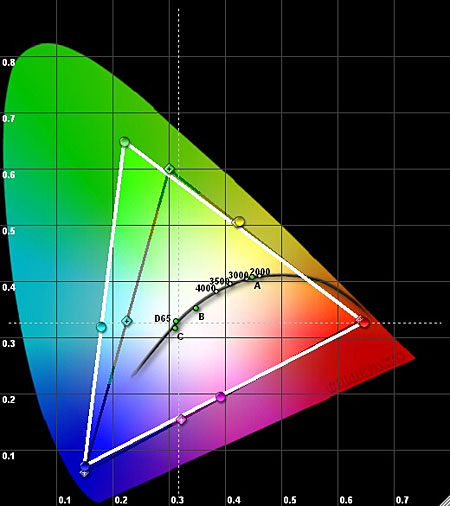
This was the best gamut Tom Norton could obtain by tweaking the CMS. He improved yellow, but green, magenta, and cyan were still way off.
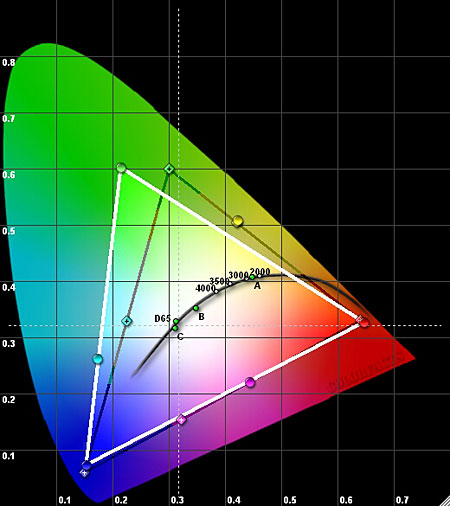
Tom was able to reduce the y coordinate of green, but this sliced off a sizeable portion of the gamut in the region of skin tones, so we both used the settings that resulted in the second chart.
- Log in or register to post comments



































































